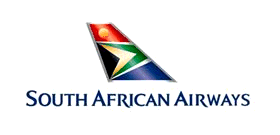 Government ponders brand new flag carrier to replace South African Airways
Government ponders brand new flag carrier to replace South African Airways
The idea of a brand new national carrier is been considered by the Government of South Africa to replace the long-suffering South African Airways (SAA) set to permanently end operations. This follows the government’s unwillingness to continue to fund what appears to be an endless hole. While little is yet known of this new carrier, the government hopes that it will be in both public and private hands. This might work, but only if there is full independence and no government interference.
SAA’s existence has been continually peppered by requests for bailouts to ensure its short-term survival given its high debt and unprofitability.
It has flirted with bankruptcy on multiple occasions. It has had over 20 CEOs in 11 years; many have come and gone amid a variety of allegations. Many strategies have been submitted to turn the beleaguered carrier around.
However, due to the high turnover of senior management, together with mismanagement, they are not fully or properly implemented. So little changes. Martin Kingston, a member of SAA’s board, said last year: “SAA competes in a cut-throat industry with razor-thin margins. There are 50 airlines serving South Africa.”
This is an inevitable conclusion that does not consider the ingrained internal problems. However, there is truth to it, but it is just one aspect. After all, last year, seats to/from South Africa by Emirates, Etihad Airways, Qatar Airways, and Turkish Airlines alone amounted to four million – 65% of SAA’s own total seats that year. (Including SA Airlink and SA Express, it reduces to 40%.)
In 2019, SAA’s total seats – including SA Airlink and SA Express – totalled just under ten million. This was not helped by its strike that year.Between 2010 and 2019, SAA’s own seats reduced by 40%, and four million. Meanwhile, seats by SA Express fell by 56%, and 1.3 million – counterbalanced by SA Airlink adding 1.2 million.
SA Express, another carrier suffering financially, ended all operations in March this year. It is not expected to restart.
SAA had a 25% share of the country’s total seats last year, down from a high of 43% in 2013.
SAA’s continual decline is mainly from falling seats within the domestic market, which reduced by 43% between 2010 and 2019 – versus ‘just’ 9% internationally.
As such, its domestic market share has fallen from 45% to 20%. This clearly raises the question of the carrier’s role within South Africa, especially given the increasing penetration of LCCs, including its own lower-cost unit, Mango.
South Africa’s domestic market is relatively large volume-wise, although yields have been falling from increasing LCC competition. SAA’s domestic reduction was offset by Mango, whose domestic seats exceeded its parent – and the regional units – last year: 4.6 million against 4.5 million.
However, even including Mango, the Group’s share of the South African domestic market fell from 56% in 2010 to 41% in 2019.
